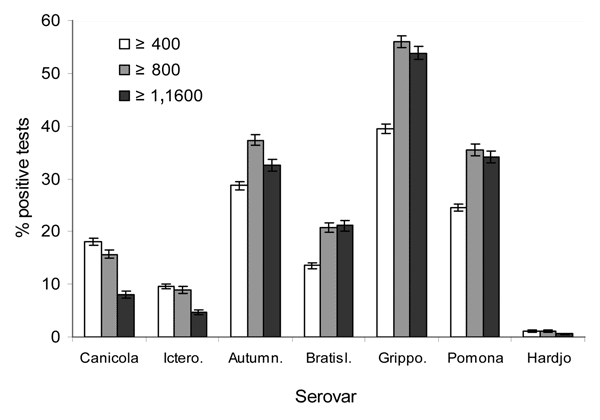Volume 12, Number 3—March 2006
Dispatch
Canine Leptospirosis, United States, 2002–2004
Figure 1

Figure 1. Percentage of positive microscopic agglutination tests by Leptospira serovar, using 3 different cutoff titers for 23,005 canine sera from 2002–2004. Serovars Canicola and Icterohaemorrhagiae have been used in canine bacterins for leptospirosis during the study period. Ictero., Icterohaemorrhagiae; Autumn., Autumnalis; Bratisl., Bratislava; Grippo., Grippotyphosa.
Page created: January 27, 2012
Page updated: January 27, 2012
Page reviewed: January 27, 2012
The conclusions, findings, and opinions expressed by authors contributing to this journal do not necessarily reflect the official position of the U.S. Department of Health and Human Services, the Public Health Service, the Centers for Disease Control and Prevention, or the authors' affiliated institutions. Use of trade names is for identification only and does not imply endorsement by any of the groups named above.